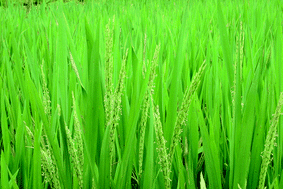Total arsenic and arsenic speciation was performed on different rice types (basmati, long-grain, polished ([white] and wholegrain [brown]) that had undergone various forms of cooking. The effect of rinse washing, low volume (2.5 : 1 water : rice) and high volume (6 : 1 water : rice) cooking, as well as steaming, were investigated. Rinse washing was effective at removing circa. 10% of the total and inorganic arsenic from basmati rice, but was less effective for other rice types. While steaming reduced total and inorganic arsenic rice content, it did not do so consistently across all rice types investigated. Low volume water cooking did not remove arsenic. High volume water : rice cooking did effectively remove both total and inorganic arsenic for the long-grain and basmati rice (parboiled was not investigated in high volume cooking water experiment), by 35% and 45% for total and inorganic arsenic content, respectively, compared to uncooked (raw) rice. To reduce arsenic content of cooked rice, specifically the inorganic component, rinse washing and high volume of cooking water are effective.

You have access to this article
 Please wait while we load your content...
Something went wrong. Try again?
Please wait while we load your content...
Something went wrong. Try again?


 Please wait while we load your content...
Please wait while we load your content...